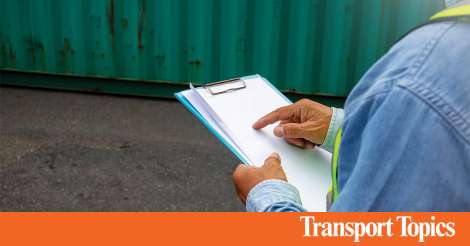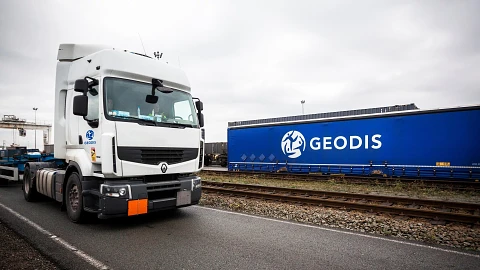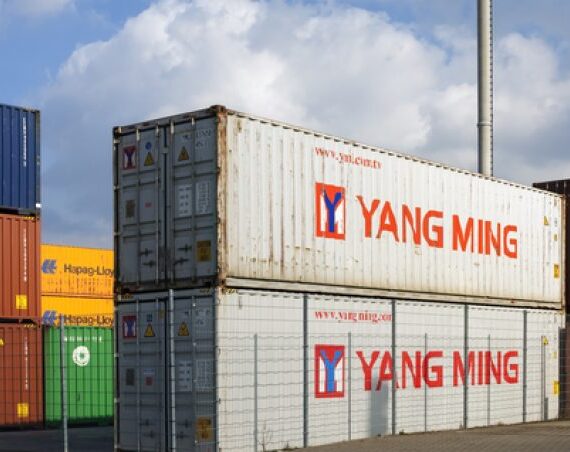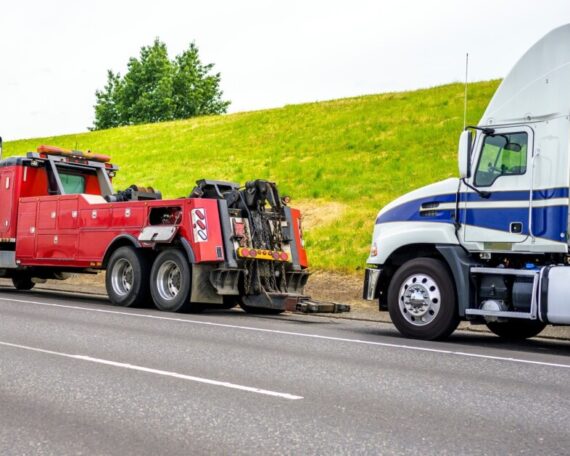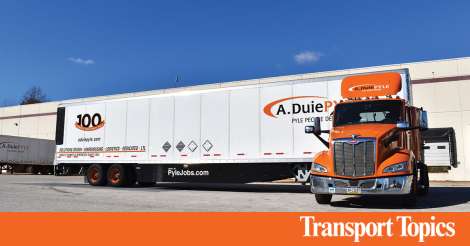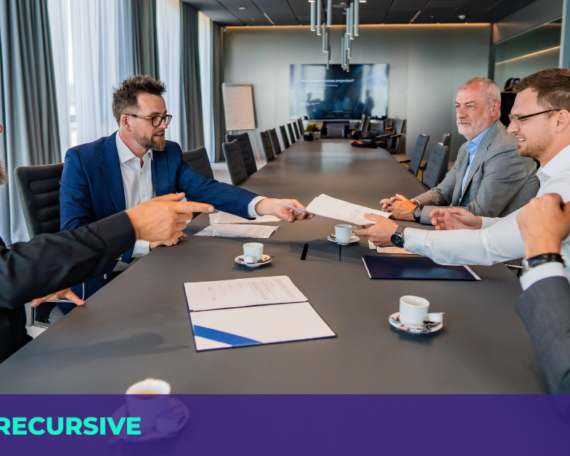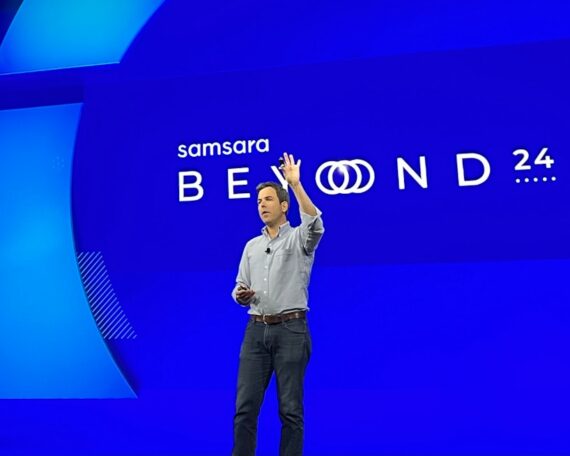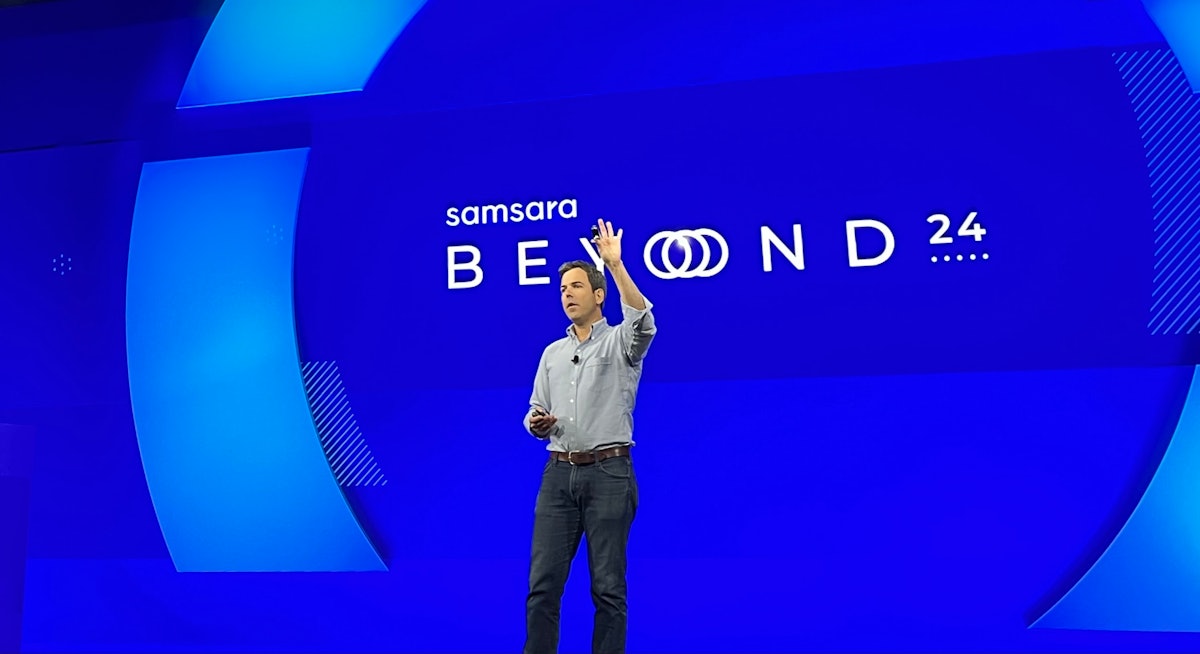“Focus on the infrastructure first, or in this case, put the cart before the horse,” Penske’s Paul Rosa says of prioritizing the infrastructure over buying the truck. (Penske)
[Stay on top of transportation news: Get TTNews in your inbox.]
According to industry leaders, this simple, yet crucial detail for fleets to consider when adding electric trucks to their rosters should be their top priority: where to plug them in.
In fact, Paul Rosa, Penske’s senior vice president of procurement and fleet planning, said fleets should prioritize the charging infrastructure over buying the truck.
“You’re going to be able to get a vehicle in that window of time from when you start the infrastructure to when it’s energized,” he said. “So focus on the infrastructure first, or in this case, put the cart before the horse.”
However, no matter how good the timing for fleets, the cart and horse are expensive, and it’s too costly to wait regardless.
A Class 8 battery-electric truck can cost $400,000, an amount lessened by government incentives. Meanwhile, a report released by the Clean Freight Coalition in March found the commercial vehicle industry would have to invest about $620 billion in charging infrastructure to fully electrify the U.S. commercial truck fleet. Utilities would need to invest an additional $370 billion, creating a nearly $1 trillion price tag.
Rosa, whose Penske company operates Classes 3-8 electric vehicles, feels good about the state of vehicle technology. Now, he said, fleets must decide if it works from a total-cost-of-ownership perspective. Infrastructure technology, Rosa noted, is starting to catch up.
He also stressed the importance of communication between fleets and the utility provider and building relationships.
“It’s about having that interaction with them on a regular cadence and regular basis, and that’s one of the things we’re recommending to all of our customers,” he said. “Go and meet with them if you have interest today or in the next couple of years to have an electric vehicle or vehicles. Please go meet with them now.”
The most important thing fleets can do when they start thinking about investing in electric is contact their utility provider, said Rob Graff, senior technical adviser with the North American Council for Freight Efficiency. Trucking companies’ needs will differ. What works with one utility may not work with another because rates and availability vary, he added.
However, finding the right person to talk to can be difficult. Fleets also should contact their truck manufacturer, which will have relationships with people who can help with depot, truck and utility planning. They also should talk to a similar fleet that already has electrified.
“Talk to someone other than the people trying to sell you charging equipment because they maybe have an incentive to sell you larger equipment than you need,” Graff said.
Miles Archer, Ryder’s senior manager of charging and partnerships, agreed that fleets should engage with the utility as early as possible. Ryder is operating more than 100 EVs across its electric fleet, a number it expects to grow. He said discussion topics include whether enough power capacity already exists or if more needs to be brought in.
The more concrete, long-range demand a fleet can show the utility it will need, the easier it is for the utility to justify the investment to the commission that regulates it. A truck with no charging infrastructure becomes a stranded asset, but fleets also don’t want to install expensive infrastructure without a truck using it.
Graff said costs are based on two factors. One is the megawatts provided, or the size of the pipe. The other is the amount of electricity the fleet uses. A smaller pipe costs the fleet and the utilities less, so fleets might want to charge as slowly as possible.
Ryder’s Miles Archer recommends fleets have in-depth conversations with their finance departments about the cost of the infrastructure. (Ryder System)
Ryder’s Archer noted that fleets can keep costs down by rightsizing their charging infrastructure.
“A new customer may look at the market and say, ‘I need a 350- kilowatt charger because that’s nice and fast, and I want to be as fast as possible,’ ” he said. “But the vehicle that they’re considering is at 150 kilowatt, that’s where it’s capped, and it has a 10-hour dwell time, and it runs all of a hundred miles in a day. So that would pair very well with a 30-kilowatt charger overnight with sufficient time to deal with any outlier cases.”
Archer recommended that there should be full-scale conversations with the finance department about the cost of the infrastructure, the fleet operators about routes and dwell time, and the facilities operators about where improvements can be made.
It’s possible a nearby charging location can be leveraged. Carlo Rodriguez, Ryder’s managing director for EV and advanced vehicle technology team, said one customer fleet had light-duty vans arrive before the charging infrastructure was ready. Ryder found a nearby 7-Eleven convenience store with fast charging available.
Challenges Ahead
Fleets may experience sticker shock when confronted with an infrastructure project’s cost, Rodriguez said, thinking about the cost as an annual expense or one covering the vehicle’s term, but costs can be depreciable real estate improvements.
UPS’ Ryan Bankerd, corporate director of automotive sustainability, said a fleet can potentially install limited charging capability without too much trouble, but installing charging infrastructure at scale can be difficult because of utilities and permitting challenges. The process requires a partnership among a utility, government agencies and the fleet.
“With any sort of fracture in those three relationships, you could find yourself with stranded assets or significant delays,” he said.
Bankerd said UPS once needed an easement for a Class 8 site to locate infrastructure above a water main and an electrical conduit. The county owned one, the city owned the other, and they had boilerplate language preventing either from agreeing to the easement. UPS was able to leverage its partnerships and work with the utility to find a solution, but assets were stranded for a time.
He warned that smaller fleets can face unexpected challenges.
“You don’t know what’s sitting in your property until you start digging it up and laying in the cables,” he said. “You don’t know what’s sitting in the street just outside your property.”
Voltera recently opened a $15 million facility near the Port of Long Beach, Calif., that serves Einride. It can charge up to 200 Class 8 electric trucks a day. (Volterra)
Bankerd said smaller fleets should watch the market space and see what bigger fleets have done. It is best to understand what locations have good partners and availability where they actually can meet their sustainability goals.
He also noted that fleets should hire good consultants before they move into those spaces.
The electrification challenge has been increased by changes to the grid in recent decades, NACFE’s Graff said. It has become more reliant on distributed generation through noncentralized, intermittent sources, such as rooftop solar sites and wind turbines. The grid now is less suitable for fleets than the historical grid, where power plants alone produced a steady load. There also has been a lot of deferred maintenance. Energy demand was flat for about two decades because of energy conservation, including the switch to LED lighting. Demand has grown the past couple of years. Graff contended the grid must be expanded, but it’s unclear who will pay for it. Trucking terminals tend to be in locations that aren’t well supplied, and they traditionally haven’t used much electricity. However, that will change as fleets electrify.
While fleets are working to solve their in-house infrastructure challenges, others in the marketplace are working to provide power over the road. Among those are Cyclum and Voltera.
Cyclum is planning a network of charging stations paired with high-end convenience stores with driver amenities. Shaun Lee, director of field operations, said the company expects to have four to eight locations open next year, with the first in Tulare, Calif. The company hopes to open 30 to 40 sites per year over the next 10 years. Each location will offer renewable, transitional and traditional fuels, including electric charging, hydrogen, compressed natural gas, renewable diesel and traditional diesel.
The prototypical site can be preassembled using modular configurations. The Tulare site is planned to have four super-fast chargers, 10 fast chargers and 35 overnight chargers. The sites also will have 18 to 36 charging locations for passenger vehicles. The facilities, too, will have the ability to service autonomous vehicles using on-site attendants. Each will cost about $35 million, but they will qualify for 30%-35% in tax credits. Also, Lee said the company has energy sector backing.

Corey Cox of the Tandet Group of companies discusses how early AI adopters are beginning to harvest the latest wave. Tune in above or by going to RoadSigns.ttnews.com.
Lee said the plan is for the sites to be carbon negative. The electricity will be site-generated using renewable natural gas and, in some cases, wind turbines. Lee said that also will reduce charging costs.
“Basically, we’re operating just as any truck stop would do, only we’re doing it from a whole new playbook, right?” he said. “So we’re generating renewable energy on the site. We’re utilizing a better level of food services. And we’re just redrawing the lines when it comes to how we’re providing service in the marketplace.”
Voltera, meanwhile, is building large charging stations that will serve specific fleet customers. CEO Matt Horton said the company works with a utility to find where electricity can be available and then develops the property. It is looking for locations with clusters of trucking companies with high truck traffic density driving regional routes.
Last year, it deployed about $150 million in capital on property acquisitions and development. It intends to do that much or more this year. It is teamed with EQT Partners, a large private equity fund.
The company recently opened a $15 million facility near the Port of Long Beach, Calif., that serves Einride. It can charge up to 200 Class 8 electric trucks a day at 65 DC fast charging stations. It has opened another facility in Phoenix serving lighter-duty vehicles. Another 19 sites are in stages of development, with others in the pipeline. Some will cost more than $30 million. A Port of Savannah, Ga., site will serve several customers.
Looking ahead, Horton expects to see more charging stations like Voltera’s. Once they are seen as good investments, tens of billions of dollars will flow into the market.
“Very soon, you’re going to start to see facilities like the one we built near Long Beach popping up everywhere. You look at a facility like that, that really is a vision of what’s coming,” he said. “So if you want to go see the future, it’s available near Long Beach today.”
Want more news? Listen to today’s daily briefing below or go here for more info:
Read More

